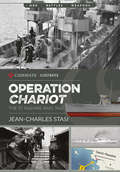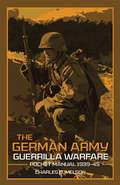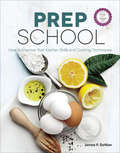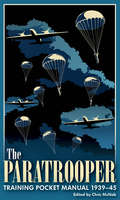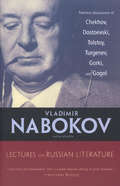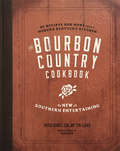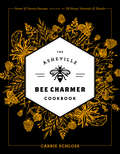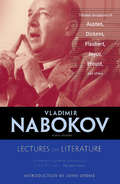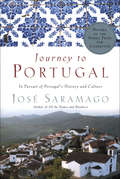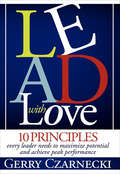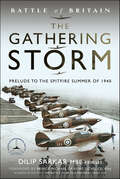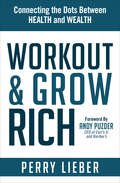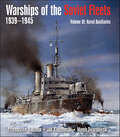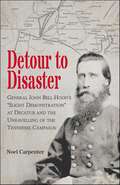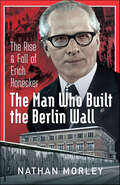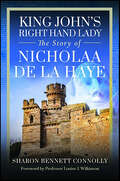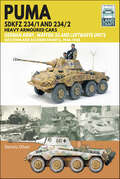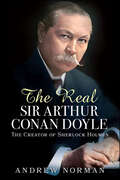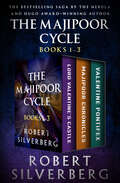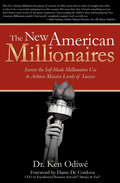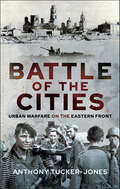- Table View
- List View
Operation Chariot: The St Nazaire Raid, 1942 (Casemate Illustrated #Cis0013)
by Jean-Charles StasiAn illustrated history of the World War II British amphibious attack on a dry dock in the German-occupied French town. At the beginning of 1942, the prospect of Germany&’s Tirpitz, the heaviest battleship ever built by a European navy, patrolling the Atlantic posed a huge threat to the convoys that were the lifeline for Britain. Bombing raids to destroy the ship failed. A more radical plan was conceived to destroy the dry-dock facility at St Nazaire on the French Atlantic coast. Without the use of the only suitable base for the ship, the threat would be neutralized. The plan was to ram the entrance gates with a ship packed with explosives on a delayed fuse. A motorboat armed with torpedoes would fire at the inner gate causing further damage to submarine pens. The troops and crew would then destroy as many dockyard targets as they could and withdraw in fast motor launches that had followed them in. All this was to be achieved under cover of an air raid. HMS Campbeltown, a U.S. lend-lease destroyer, was chosen for the task. On the night of March 27, the raid commenced. The Campbeltown succeeded in lodging its bows in the outer gates. The fuses detonated the explosives in its hold the following day. The dock gates were destroyed. The cost to the Allies was high, but the Tirpitz was never able to leave Norwegian waters. This volume in the Casemate Illustrated series gives a clear overview of the planning and execution of the raid and its aftermath, accompanied by 125 photographs and images, including color profiles and maps.
The German Army Guerrilla Warfare: Pocket Manual, 1939–45 (The Pocket Manual Series)
by Charles D. MelsonAn exploration of German World War II small-scale military strategy, edited by the former chief historian of the U.S. Marines. While small wars are not new, how they should be fought by a modern industrial nation is still very much a matter for debate. It is thus worth paying heed now to the experiences of another power which once encountered the same problems. This pocket manual examines German analysis of the problem, covering experiences from the Napoleonic era to the Third Reich, based upon the historical analysis, Kleinkrieg, provided to the German High Command by Arthur Ehrhardt in 1935 (republished in 1942 and 1944), and the Bandenbekampfung (Fighting the Guerrilla Bands) document provided to Germany&’s OKW in 1944. In both, conditions that were specific to broader military operations were separated from circumstances in occupation campaigns, and the new background in the German experience in suppressing rebellion during the Second World War is presented. Avoiding ideological biases, this manual examines the purely military problem as seen by professionals. Rediscovered and presented in English, these German thoughts on how best to fight small wars have been edited and annotated by Charles D. Melson, former chief historian for the U.S. Marine Corps. &“The German attitude to guerrilla war was far more complex than stereotypical brutality for the sake of brutality.&” —Stephen G. Fritz, PhD, author of Ostkrieg &“A highly accessible introduction to an important, but frequently neglected, aspect of German military history as well for those interested in guerrilla warfare.&” —Bruce I. Gudmundsson, PhD, U.S. Marine Corps University, author of On Artillery
Prep School: How to Improve Your Kitchen Skills and Cooking Techniques
by James P. DeWanAn IACP Cookbook Award finalist. &“A good primer for beginning cooks and an excellent reference for experienced cooks needing a refresher.&” —ChicagoNow Prep School is the ultimate collection of the weekly Chicago Tribune column of the same name, written by culinary instructor and award-winning food writer James P. DeWan. This compilation is focused on teaching readers how to become better cooks, from amateurs who are learning to cook for themselves or their families to professional and gourmet chefs who are searching to perfect their technique. Illustrated with full-color photography and a plethora of simple, plainspoken instructions, Prep School is an easy go-to guide for becoming more adept at any kitchen skill. Prep School is filled with more than fifty delicious recipes, as well as insightful and straightforward tips on knife skills, preparation techniques, pantry essentials, holiday meals, and general advice on how to make your kitchen as user-friendly as possible. Before any home cook or professional chef picks up a cookbook, they should first pick up Prep School and be sure to take DeWan&’s advice to heart. His recommendations on improving kitchen efficiency and ease, along with his in-depth knowledge of shortcuts and cooking common sense, make DeWan the perfect teacher for any aspiring culinary student. Finalist for 2014 International Association of Culinary Professionals&’ Best Compilation Cookbook Award &“From cooking with booze to conquering crab cakes, reading James P. DeWan&’s column has helped me graduate from cooking like I still live in a college dorm.&” —RedEye
Diabetes Snacks, Treats, and Easy Eats: 130 Recipes You'll Make Again and Again
by Barbara Grunes Linda R. YoakamThe author of Healthy Grilling &“focuses on encouraging the consumption of good, wholesome foods, not on making junk food less junky&” (Debra Edidin, MD, pediatric endocrinologist, Northwestern University Medical School). Like everyone else, people with type II diabetes don&’t have much time to cook, don&’t want to deal with &“gourmet&” recipes, and just want to eat their favorite dishes. They want to pop something in the oven, under the broiler, or on the gas grill, and eat what they like without worrying that it will be harmful to them. If they are kids (and the increase of diabetes among teens is alarming), they want to find some ready-to-munch snacks waiting for them. In this must-have cookbook, you&’ll find . . . · 150 recipes for snacks, dips, munchies, appetizers, main courses, side dishes, vegetarian treats, beverages, cakes, pies, cookies and brownies, and desserts—even ice cream—that are low in fat, carbohydrates, and sodium, created especially for people with diabetes · Dishes that are really easy to make—most take less than 20 minutes to prepare, use less than four ingredients plus condiments, and don&’t require much in the way of cooking skills · Pantry basics that make quick cooking a breeze. · Special section of meals and snacks kids like. · Nutrition analysis and exchanges for each recipe. · Introduction by a Certified Diabetes Educator covering basics of cooking for people with diabetes.
The Paratrooper Training Pocket Manual, 1939–45 (The Pocket Manual Series)
by Chris McNabDuring World War II, it quickly became apparent that the physical and tactical demands placed upon paratroopers required men of exceptional stamina, courage and intelligence. To create these soldiers, levels of training were unusually punishing and protracted, and those who came through to take their &“wings&” were a true elite. The Paratrooper Training Pocket Manual 1939–1945 provides an unusually detailed look into what it took to make a military paratrooper during the Second World War, and how he was then utilized in actions where expected survival might be measured in a matter of days. Using archive material from British, U.S., German and other primary sources—many never before published—this book explains paratrooper theory, training, and practice in detail. The content includes: details of the physical training, instruction in static-line parachute deployment, handling the various types of parachutes and harnesses, landing on dangerous terrain, small-arms handling, airborne deployment of heavier combat equipment, landing in hostile drop zones, tactics in the first minutes of landing, radio comms, and much more. Featuring original manual diagrams and illustrations, plus new introductory text explaining the history and context of airborne warfare, The Paratrooper Training Pocket Manual 1939–1945 provides a detailed insight into the principles and practice of this unique type of combat soldier.
Simple Knits: 12 Easy-Knit Projects for Your Home (Simple Knits)
by Claire CromptonPatterns for the coziest and cutest cushions, seating cubes, and pillows from the established designer and bestselling author of The Knitter&’s Bible. Featuring strong designs across a range of styles for the new-to-knitting market, all the projects included are either Beginner, Easy or Intermediate skill level, and the majority are Easy. As well as patterns and project instructions, you will also find an explanation of the abbreviations used, a knitting needle conversion chart, a skill level key, a standard yarn weight chart, knitting techniques and making-up techniques. Projects include: · Pompom Cushion · Bright Stripe Pillows · Beaded Cushions · Black and White Pillow · Vibrant Seating Cube · Fringed Ribbon Pillow · French Knitted Cushions · Blooming Rose Pillow · Diamond Pattern Pillow · Bunting Cushion
Diabetes Snacks, Treats, & Easy Eats for Kids: 150 Recipes for the Foods Kids Really Like to Eat
by Barbara Grunes Linda R. YoakamChild-friendly recipes that fit into your busy lifestyle and offer healthy—and tasty—alternatives to today&’s fast food meals and sugary snacks. This redesigned and expanded third edition of Diabetes Snacks, Treats, and Easy Eats for Kids offers even more simple, delicious recipes for healthy, well-balanced diets. Since the book was first published in 2006, the prevalence of diabetes in children has continued to increase. Children under age nineteen have seen a twenty-one percent increase in Type 1 cases, and children ages ten to nineteen have seen a thirty percent increase in cases of Type 2—a disease that used to be considered an adult condition. But kids will be kids, and when they come home from school, they want a snack that&’s simple, satisfying, and occasionally sweet. When it comes to dinner, they usually don&’t have the time or the taste for fancy meals. With this in mind, author Barbara Grunes has developed more than 150 recipes for snacks and meals that kids really like and that stay within diabetic guidelines. Grunes&’s goal is to help all kids enjoy food that is good for them—even if they have diabetes. Each recipe includes the nutritional information readers need, whether they count carbs or use the exchange method. With recipes like Pizza Puffs, Spud Pancakes, Chicken Fajitas, Ice Cream Cone Cupcakes, and Fruit Turnovers, this book proves that everyone can enjoy familiar and delicious food together. After all, it&’s not about &“good,&” &“bad,&” or &“forbidden&” foods—it&’s about readers feeding their families sensibly.
Lectures on Russian Literature
by Vladimir NabokovThe acclaimed author presents his unique insights into the works of great Russian authors including Tolstoy, Dostoevski, Gogol, Gorki, and Chekhov. In the 1940s, when Vladimir Nabokov first embarked on his academic career in the United States, he brought with him hundreds of original lectures on the authors he most admired. For two decades those lectures served as the basis for Nabokov&’s teaching, first at Wellesley and then at Cornell, as he introduced undergraduates to the delights of great fiction. This volume collects Nabokov&’s famous lectures on 19th century Russian literature, with analysis and commentary on Nikolay Gogol&’s Dead Souls and &“The Overcoat&”; Ivan Turgenev&’s Fathers and Sons; Maxim Gorki&’s &“On the Rafts&”; Leo Tolstoy&’s Anna Karenina and The Death of Ivan Ilych; two short stories and a play by Anton Chekhov; and several works by Fyodor Dostoevski, including Crime and Punishment, The Idiot, and The Possessed. This volume also includes Nabokov&’s lectures on the art of translation, the nature of Russian censorship, and other topics. Featured throughout the volume are photographic reproductions of Nabokov&’s original notes. &“This volume . . . never once fails to instruct and stimulate. This is a great Russian talking of great Russians.&” —Anthony Burgess Introduction by Fredson Bowers
The Bourbon Country Cookbook: New Southern Entertaining
by David Danielson Tim Laird&“A book that will stand as one of the most essential cookbooks in the history of Southern cuisine.&” —Edward Lee, chef and author of the James Beard Award–winner of Buttermilk Graffiti Bourbon, the first uniquely American distilled spirit, is nearly synonymous with Kentucky, its birthplace. However, it has come a long way since it was first distilled in the late 1700s, and its popularity and refinement have never been greater. At the same time, southern cuisine has evolved to keep up with bourbon&’s evolution through once unheard-of collaborations between kitchen and bar, a renewed interest in seasonal local ingredients, and the influence of the delicious food traditions of the region&’s growing migrant populations. This book distills the spirit and hospitality—both new and old—of great southern food and drink into ninety accessible recipes designed to help you achieve the ease and elegance of Bourbon Country entertaining in your own home. Arranged by the kind of traditional fare you&’d find on a Kentucky table—pickles, vegetables, ancient grains, bounties from the barnyard, bourbon cocktails, and more—these recipes pay homage to the rituals and victuals of yesteryear while embracing the new southern palate and the flavors of modern Kentucky bourbon. &“Farm fresh and artisanal aren&’t trends in the bluegrass state, but a long-established way of life. Add the resonant ring of the finest American distillation—Kentucky bourbon—as these brilliant chefs do, and you&’ve created magnificence and memories. In fact, the recipes, stories, and photographs here are so fine, you won&’t want to wait for a horse race, but use this book year &’round.&” —Ronni Lundy, author of the James Beard Award–winner Victuals
The Asheville Bee Charmer Cookbook: Sweet and Savory Recipes Inspired by 28 Honey Varietals and Blends
by Carrie Schloss&“A beautiful tribute . . . From breakfast pastries to exotic marinades to unexpected desserts, Carrie Schloss explores the many sides of honey. &” —Ashlee Aubin, executive chef, Fisk & Co. Asheville Bee Charmer, opened in 2014 by beekeepers Jillian Kelly and Kim Allen, has become a destination for both local foodies and tourists. This honey purveyor, located in one of the most pollinator-friendly parts of the United States, offers a range of bee-related products and more than fifty different artisanal honey varietals—each with its own unique color, texture, and taste. Inspired by the vast honey selection available behind the Honey Bar, chef Carrie Schloss has created The Asheville Bee Charmer Cookbook, a collection featuring 130 recipes, twenty honey varietals, and eight special Bee Charmer blends. With a color, aroma, and tasting guide to honey varietals and dishes like Bee Pollen Nut Brittle, Chipotle Honey–Marinated Skirt Steak, and Milk and Honey Dinner Rolls, this cookbook proves that honey is the best way to season or sweeten your next meal. Schloss writes with the home cook in mind, packing complex, surprising flavors into recipes written in clear, accessible prose, and the recipes are accompanied by beautiful full-color photography throughout. &“An inspiration . . . Cooks of every level will leave the sugar in their cupboards and reach for their new favorite local varietal instead.&” —Chris Pandel, chef/partner, Swift & Sons &“A lovely testimonial to the significance of the honeybee. With these delicious, approachable recipes, being good stewards of the land has never tasted so sweet. &” —Laurell Sims, urban farmer, beekeeper, and Slow Food Chicago board member
Lectures on Literature (Vib Ser. #Vol. 227)
by Vladimir NabokovThe acclaimed author of Lolita offers unique insight into works by James Joyce, Franz Kafka, Jane Austen, and others—with an introduction by John Updike. In the 1940s, when Vladimir Nabokov first embarked on his academic career in the United States, he brought with him hundreds of original lectures on the authors he most admired. For two decades those lectures served as the basis for Nabokov&’s teaching, first at Wellesley and then at Cornell, as he introduced undergraduates to the delights of great fiction. This volume collects Nabokov&’s famous lectures on Western European literature, with analysis and commentary on Charles Dickens&’s Bleak House, Gustav Flaubert&’s Madam Bovary, Marcel Proust&’s The Walk by Swann&’s Place, Robert Louis Stevenson&’s &“The Strange Case of Dr. Jekyll and Mr. Hyde,&” and other works. This volume also includes photographic reproductions of Nabokov&’s original notes, revealing his own edits, underlined passages, and more. Edited and with a Foreword by Fredson BowersIntroduction by John Updike
Journey to Portugal: In Pursuit of Portugal's History and Culture
by José SaramagoThe Nobel Prize–winning author explores his homeland in &“this monumental work, a literary hybrid&” of cultural history, literary nonfiction, and travelogue (Publishers Weekly). In 1979, José Saramago decided to write a book called Journey to Portugal—and dedicated himself to obtaining the fullest meaning of his title. More than merely journeying in or through his native country, he wanted to achieve a deep encounter with it, foregoing the conventional assumptions and the routines of tourist guides. Instead, he scoured the country with the eyes and ears of an observer fascinated by the ancient myths and history of his people. Recording his experiences and observations across the length and breadth of Portugal, Saramago brings the country to life as only a writer of his brilliance can. Whether an inaccessible medieval fortress set on a cliff, a wayside chapel thick with cobwebs, or a grand mansion in the city, the extraordinary places of this land come alive with kings, warriors, painters, explorers, writers, saints, and sinners. Infused with the tenderness and intelligence that have become familiar to his readers, Saramago's Journey to Portugal is an ode of love for a country and its rich traditions.
Lead with Love: 10 Principles Every Leader Needs to Maximize Potential and Achieve Peak Performance
by Gerry Czarnecki&“Any manager aspiring to superior leadership would be wise to study Gerry&’s advice&” (H. Wayne Huizenga). Lead with Love is like no other leadership book you have read. Arguing that all leaders must begin with love as their first principle, the author integrates this carefully defined concept into each of his remaining nine key leadership principles—ultimately revealing how passion, and an emotional connection with the organization&’s mission, vision and values, will drive success. These ten principles apply to CEOs who lead companies; executive directors who lead nonprofits; chairmen who lead their peers on corporate boards; coaches who lead athletic teams; teachers who lead classes; mothers who lead households; pastors who lead congregations; foremen who get the plant output manufactured every day. If others look to you for leadership, guidance, or inspiration to achieve goals, there&’s much to learn in this book that has been praised by tough-minded entrepreneurs and spiritually empowering thought leaders alike.
The Gathering Storm: Prelude to the Spitfire Summer of 1940 (Battle of Britain)
by Dilip SarkarDilip Sarkar has studied the Battle of Britain period for a lifetime and is renowned for his meticulous research and evidence-based approach, setting events within the broadest possible context. In doing so, he has helped enrich our appreciation and understanding of the past. In this, the first of a new seven volume series on the Battle of Britain, we have the background to the aerial conflict of the summer of 1940 revealed in great detail and told comprehensively as never before. No stone has been left unturned, no angle unexplored. This meticulous approach the research, combined with the human stories and events, many revealed for the first time, tells what Dilip calls ‘the Big Story’. The development of air power, the creation of Britain’s defenses, the German side, the Home Front and political events are all covered – and much more. After considering the background threads prior to the outbreak of war in 1939, this book then describes the developing conflict on land, sea and in the air. The German invasion of Norway, the Fall of France and the air fighting over Dunkirk are all explored, along with Hitler’s actual preferred policy towards Britain, which at first was one of blockade – not invasion. The author, with justification, questions the validity of the Battle of Britain’s official start-date being 10 July 1940, evidencing the fact that the fighting actually began eight days earlier. From that date onwards, a day-by-day, hour-by-hour, account of the fighting is provided, giving due recognition to those aircrew lost or wounded before 10 July 1940, and whose names are not, therefore, found amongst ‘The Few’. Due accord is also given to the Royal Navy, and efforts of both Bomber and Coastal commands, emphasizing just what a ‘big’ story this actually is – far from simply concerning a handful of Spitfire and Hurricane pilots. Through diligent research with crucial official primary sources and personal papers, Dilip unravels many myths, often challenging the accepted narrative. This is not, however, simply another dull record of combat losses and claims, far from it. Drawing upon unique first-hand accounts from a wide-range of combatants and eyewitnesses, along with the daily Home Intelligence Reports and the papers of politicians such as Italian Foreign Minister Count Ciano, this really is an unprecedented approach to understanding the build-up to and times of the Battle of Britain.
Workout & Grow Rich: Connecting the Dots Between Health and Wealth
by Perry LieberCreate a healthy culture for success in work and life with advice from an elite personal trainer and president of FoundWellness: the Workplace Workout. As a personal trainer, Perry Lieber has been part of his clients&’ successes, and he knows that working out is linked directly to better performance in the workplace. In Workout and Grow Rich, Lieber explores that link to its fullest extent, teaching readers what it means to be truly rich in every definition of the word. There have been many books written about how to lead a more successful and fulfilling life, but there are few to none that claim working out as the secret to discovering that success. Workout and Grow Rich takes readers on a step-by-step journey to learn the same techniques used by athletes, corporate leaders, and celebrities to incorporate personal fitness into their busy schedules. As a workplace expert himself, Lieber knows the difficulties associated with maintaining a healthy lifestyle. In Workout and Grow Rich, he includes interviews with some of his most successful clients, like Greg Renker, founder of Guthy-Renker, and Mark Bissell, CEO of Bissell, to tell readers directly how Lieber&’s strategies improved their lives.
Marcus Furius Camillus: The Life of Rome's Second Founder
by Marc HydenThis is the only modern biography of Marcus Furius Camillus currently available in English. Camillus served as a censor, was elected to six consular tribuneships, appointed dictator five times, and enjoyed four triumphs. He toppled mighty Veii, ejected the Senones from Rome following its sacking, and helped orchestrate a grand compromise between the patricians and plebeians. The Romans even considered him Rome’s second founder – a proud appellation for any Roman – and revered him for being an exemplar of Roman virtue. Interestingly, he never held the consulship. Plutarch stated that Camillus had avoided it on purpose, and for good reason. The office was often at the heart of controversy, given that patricians dominated it for most of Camillus’ life. The appointment of a dictator was an emergency measure taken only in the direst of situations and the fact that Camillus was repeatedly appointed speaks of a period when the young Republic was surrounded by enemies and still fighting for survival. Without Camillus’ efforts the city may never have fulfilled its great destiny. Marc Hyden sifts the fragmentary and contradictory sources and, while acknowledging that much legend and exaggeration quickly accrued around Camillus’ name, presents the story of this remarkable life as the ancient Romans knew it.
Warships of the Soviet Fleets 1939–1945: Volume III: Naval Auxiliaries
by Przemyslaw Budzbon Jan Radziemski Marek TwardowskiSeventy-five years after the end of the Second World War the details of Soviet ships, their activities and fates remain an enigma to the West. In wartime such information was classified and after a brief period of glasnost (‘openness’) the Russian state has again restricted access to historical archives. Therefore, the value – and originality – of this work is difficult to exaggerate. It sees the first publication of reliable data on both the seagoing fleets and riverine flotillas of the Soviet Navy, listing over 6200 vessels from battleships to river gunboats, and mercantile conversions as well as purpose-built warships. This third and final part of the series includes all the ships in naval service that were not frontline fighting vessels. Despite auxiliary status, these were not insignificant ships – indeed the icebreakers were the largest vessels built by the USSR before the war and carried so much prestige that every leading member of the Soviet regime wanted their name on one. Apart from the obvious fleet support types – oilers, tugs and depot ships – this volume also covers unsung heroes like the salvage fleet, highly significant in the 1930s for generating much-needed foreign currency and later essential to the war effort, allowing so many sunken Soviet warships to be returned to service. Another major feature of this volume is the first clear and comprehensive listing of ex-mercantile transport ships, their periods of service and ultimate fates. Even harbor service craft are included, right down to the humble ‘heaters’ that supplied warmth to icebound warships in the depth of the Russian winters. This volume concludes with a number of important appendices on subjects like weaponry and a massive cross-referenced index that will allow readers to differentiate between ships of the same name and to track every name change. This is undoubtedly one of the most important naval reference works of recent years and will be welcomed by anyone with an interest in warships, the Soviet Navy or wider maritime aspects of the Second World War. Furthermore, as recent Russian actions appear to revive Soviet-era aspirations, this book offers both new insights and valuable background of contemporary relevance.
Detour to Disaster: General John Bell Hood's "Slight Demonstration" at Decatur and the Unraveling of the Tennessee Campaign
by Noel CarpenterA detailed account of the pivotal decision made by a young army commander to march to Decatur, and the consequential combat that ensued. In October of 1864, Confederate General John Bell Hood set out through Alabama on what would be the final campaign of the Army of Tennessee. One event in particular, overlooked and misunderstood for generations, portended what was to follow and is the subject of Noel Carpenter’s Detour to Disaster: General John Bell Hood’s “Slight Demonstration” at Decatur and the Unravelling of the Tennessee Campaign. In this fascinating and meticulously detailed and documented account—the first book-length study of the weighty decision to march to Decatur and the combat that followed there—Carpenter investigates the circumstances surrounding these matters and how they overwhelmed the controversial young army commander and potentially doomed his daring invasion. Detour to Disaster is required reading for everyone interested in the Western Theater, and especially the doomed Tennessee Campaign.
The Man Who Built the Berlin Wall: The Rise & Fall of Erich Honecker
by Nathan MorleyThe first ever English language biography of Erich Honecker, covering his entire life and career. In The Man Who Built the Berlin Wall, Nathan Morley brings to life the story of the longtime leader of the German Democratic Republic. Drawing from a wealth of untapped archival sources – and firsthand interviews with Honecker’s lawyers, journalists, and contemporary witnesses – Morley paints a vivid portrait of how an uneducated miner’s son from the Saarland rose to the highest ranks of the German Communist Party. Having survived a decade of brutality in Nazi prisons, Honecker emerged as an ambitious political player and became the shadowy mastermind behind the construction of the Berlin Wall in 1961, a crucial moment in twentieth-century history. Although frequently on the verge of being relegated to obscurity, he managed to overthrow strongman Walter Ulbricht at the height of the Cold War and reigned supreme over the GDR between 1971-1989. However, by 1980, the Honecker honeymoon was on the wane as a decade of economic and social difficulties blighted the GDR. Then, as tumultuous changes swept through the Soviet bloc, everything in and around him collapsed in 1989. His health, his certainties, his ideology, his apparatus of power, and his beloved SED party. Terminally ill, he was literally kidnapped from Russia to answer for his crimes in a Berlin court. A controversial figure, Honecker’s notorious philandering, his difficult relationship with his wife Margot, penchant for porn, addiction to hunting, and gilded lifestyle at a forest settlement north of Berlin are all brought into sharp focus. Although haunted by the fall of the Berlin Wall, Erich Honecker died in 1994, still believing the GDR was the envy of the world.
King John's Right Hand Lady: The Story of Nicholaa de la Haye
by Sharon Bennett ConnollyIn a time when men fought and women stayed home, Nicholaa de la Haye held Lincoln Castle against all-comers. Not once, but three times, earning herself the ironic praise that she acted ‘manfully’. Nicholaa gained prominence in the First Baron’s War, the civil war that followed the sealing of Magna Carta in 1215. Although recently widowed, and in her 60s, in 1217 Nicholaa endured a siege that lasted over three months, resisting the English rebel barons and their French allies. The siege ended in the battle known as the Lincoln Fair, when 70-year-old William Marshal, the Greatest Knight in Christendom, spurred on by the chivalrous need to rescue a lady in distress, came to Nicholaa’s aid. Nicholaa de la Haye was a staunch supporter of King John, remaining loyal to the very end, even after most of his knights and barons had deserted him. A truly remarkable lady, Nicholaa was the first woman to be appointed sheriff in her own right. Her strength and tenacity saved England at one of the lowest points in its history. Nicholaa de la Haye is one woman in English history whose story needs to be told…
Puma Sdkfz 234/1 and Sdkfz 234/2 Heavy Armoured Cars: German Army and Waffen-SS, Western and Eastern Fronts, 1944–1945 (LandCraft)
by Dennis Oliver"....a well-researched title that covers a lesser known type and that manages to squeeze a heck of a lot into 64 pages." —WarWheels The lightning advances of the German armored units during the Polish and French campaigns were spearheaded by fast-moving, armed reconnaissance vehicles. But these early designs suffered heavily due to their light weaponry and thin armor and a program was soon underway, led by the firm of Büssing-NAG, which culminated in the development of the Sdkfz 234 series of heavy eight-wheeled armored cars, the first of which entered service in late 1943. These vehicles proved to be rugged and reliable and were gradually up-armed to serve in the infantry support role and eventually as tank killers. This volume of the LandCraft series concludes the story of the Sdkfz 234 series, examining the versions that took part in the last battles of the war. Using archive photos and extensively researched color illustrations Dennis Oliver examines the Sdkfz 234/1 and Sdkfz 234/2 and the units that operated these often neglected, yet important, armored vehicles. A key section of his book displays available model kits and aftermarket products, complemented by a gallery of beautifully constructed and painted models in various scales. Technical details as well as modifications introduced during production and in the field are also examined, providing everything the modeler needs to recreate an accurate representation of these historic tanks.
The Real Sir Arthur Conan Doyle: The Creator of Sherlock Holmes
by Andrew NormanIn the year 1900, Sir Arthur Conan Doyle was at the height of his success as a qualified doctor, keen sportsman, writer of historical novels, champion of the oppressed and, most notably, the creator of that honorable, fearless, and eminently sensible master-detective Sherlock Holmes. Every new Holmes story was greeted with great anticipation and confidence in the knowledge that, however complex the crime, the supremely intelligent and logical detective would solve it. But in 1916 Conan Doyle surprised his readers by declaring that he believed in spiritualism. And when, in 1922, Doyle published a book in which he professed to believe in fairies, his devotees were nonplussed. How could the creator of the inexorably logical Sherlock Holmes claim to believe in something as vague, esoteric, and unproven as the paranormal? In this fascinating study of the life of the creator of one of the greatest detectives of all time, Dr Andrew Norman traces the origin of Sir Arthur Conan Doyle’s strange beliefs. Can it be that Doyle’s alcoholic father holds the key to the unanswered questions about his son? What was Doyle’s involvement in the notorious ‘Cottingley Fairies’ affair? By delving into medical records and the writings of Doyle himself, Dr Norman unravels a mystery as exciting as any of the cases embarked upon by the great Sherlock Holmes!
The Majipoor Cycle: Lord Valentine's Castle, Majipoor Chronicles, and Valentine Pontifex (The Majipoor Cycle)
by Robert SilverbergThe first three novels in the acclaimed sci-fi fantasy series from the award-winning author: &“An imaginative fusion of action, sorcery, and science fiction&” (The New York Times Book Review). In the first three books of the Majipoor Cycle, Hugo and Nebula Award–winning author Robert Silverberg delivered a vast and vividly imagined world full of epic adventure, court intrigue, and high drama. In Lord Valentine&’s Castle, an amnesiac wanderer receives dreams of his true destiny as ruler of the planet Majipoor. In Majipoor Chronicles, the planet&’s bloodthirsty history is revealed through tales of rulers and thieves. And in the final novel, Valentine Pontifex, Valentine faces the threat of civil war as well as conspiracy within his court.
The New American Millionaires: Secrets the Self-Made Millionaires Use to Achieve Massive Levels of Success
by Dr. Ken OdiwéLessons from immigrants who have prospered against the odds: &“Marvelous.&” —John Harricharan, author of When You Can Walk on Water, Take the Boat Over decades and centuries, people have come to the United States—often fleeing desperate circumstances, with next to nothing in their pockets and not even speaking the language. Yet many find extraordinary success in America, some even within a single generation of their arrival. The New American Millionaires focuses on a number of high profile immigrant millionaires living and working in the United States. Through their stories—and his own—Dr. Ken Odiwé reveals the specific qualities and attributes of the new American millionaire. These qualities and attributes are then broken down into a series of action steps that any entrepreneur can take to embark on a path of similar success. Supported by nearly a decade of research and interviews with new American millionaires, this is a guide that can inspire and inform anyone who wants to tap into their own sense of courage and adventure.
Battle of the Cities: Urban Warfare on the Eastern Front
by Anthony Tucker-JonesA concise and vivid history of the urban war on the Eastern Front. The Stalingrad battle and the Leningrad siege were just two of the brutal, devastating urban conflicts that marked the awful struggle between Germany and the Soviet Union during the Second World War. The cities were strategic fixed points in the sweeping advances and retreats of the opposing armies across eastern Europe. Yet no one has concentrated on these city battles before or has sought to tell the story of the campaigns through the fighting that took place in and around them. That is Anthony Tucker-Jones’s purpose in this concise and vivid history of the urban war on the Eastern Front. Early in the war, during the Wehrmacht’s crushing offensives of 1941 and 1942, the Red Army was forced out of a series of key cities. Moscow was threatened, Leningrad surrounded. Then, after the climactic battle at Stalingrad, the Red Army with increasing confidence, speed and power drove the Germans from the Soviet and East European capitals they had occupied. The final urban battles were fought in Germany's cities, culminating in Berlin. As he traces the course of the fighting for each city, Anthony Tucker-Jones looks at the local circumstances, the opposing forces, the strategic significance and the tactics employed. He focuses not only on the destruction and cruelty of such warfare, but on the heroism displayed on both sides and on the fate of the civilians who found themselves on the front line.
